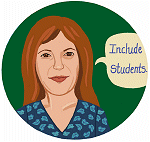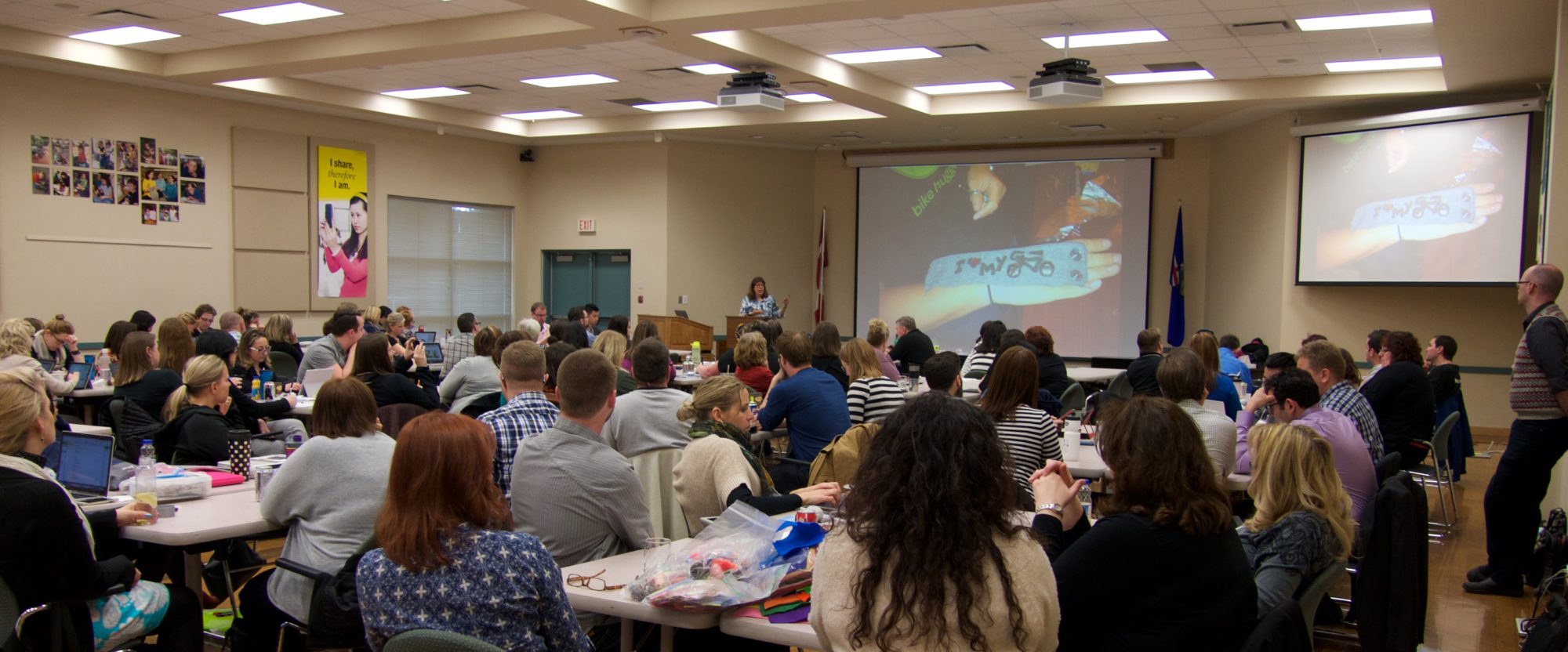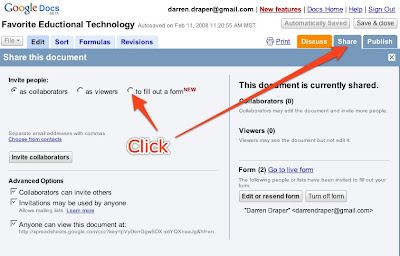 Last month I attended Educon 2.0 in Philadelphia, an “unconference” that grew out of a grass roots movement by many educators who blog and work with Web 2.0 tools. In my opinion, it was a spectacular success, not just because 250 educators showed up on a wintery weekend in Philadelphia, most on their own dime, but because of the showcase it provided for the Science Leadership Academy – especially the teachers and students.
Last month I attended Educon 2.0 in Philadelphia, an “unconference” that grew out of a grass roots movement by many educators who blog and work with Web 2.0 tools. In my opinion, it was a spectacular success, not just because 250 educators showed up on a wintery weekend in Philadelphia, most on their own dime, but because of the showcase it provided for the Science Leadership Academy – especially the teachers and students.
While it was terrific to meet the people behind the avatars and screen names, it was even more impressive to get a chance to see what a well-designed, well-executed progressive school looks like up close.
It looks like teachers.
Sure, I could go on and on about how the principal, Chris Lehmann, has shaped this school based on an “ethic of care” — meaning you teach kids before you teach subjects. The idea is so simple it’s almost startling. Brilliant leaders excel at making the simple, powerful truths concrete. Of course, caring about kids is not a secret, and Chris would be the first to admit that he stands on the shoulders of giants as he guides this school.
And the kids, of course, the kids were fabulous. Smart, friendly, look-you-in-the-eye teens who got up early on a weekend morning to make this event work. And not just help, but participate.  These teens waded into discussions and spoke their minds. They facilitated discussions of diverse educational issues, sharing their opinions and experiences with people they’d never met before. It’s obvious these young adults are being listened to and know they can share their voice.
These teens waded into discussions and spoke their minds. They facilitated discussions of diverse educational issues, sharing their opinions and experiences with people they’d never met before. It’s obvious these young adults are being listened to and know they can share their voice.
But when I get discouraged about the future of this thing we call school, and whether it can make systemic changes needed to survive and serve our society well, I’m going to have a new vision to call on. And it will be these SLA teachers who painted this picture for me more clearly than ever.
In one session in particular, four SLA teachers presented their experience of their first year. Learning to Teach: First Year Teaching in a Progressive School –  Jillian Gierke, Melissa Yarborough, Matt Kay, and Kenneth Rochester. They discussed what they learned, what they tried, what worked and what didn’t. It was a fabulous session. There is a video and handouts online, but there would be no way to capture the energy of the room as we moved to various centers, each run by one teacher who shared their classroom experiences with us. We tried our hand at designing a lesson using the Understanding by Design method, and found that 1) it was hard fun and 2) different groups came up with some really interesting yet completely different approaches.
Jillian Gierke, Melissa Yarborough, Matt Kay, and Kenneth Rochester. They discussed what they learned, what they tried, what worked and what didn’t. It was a fabulous session. There is a video and handouts online, but there would be no way to capture the energy of the room as we moved to various centers, each run by one teacher who shared their classroom experiences with us. We tried our hand at designing a lesson using the Understanding by Design method, and found that 1) it was hard fun and 2) different groups came up with some really interesting yet completely different approaches.
 One teacher shared the lesson he learned over the year – “less is more,” he quietly said. And you could see the conviction in his eyes that this wasn’t the third bullet on a list of rules he’d been handed. He’d lived it and learned it. Another teacher shared how her ongoing discussions with other faculty shaped her classroom style, and how she planned to continue this as new faculty joined the SLA.
One teacher shared the lesson he learned over the year – “less is more,” he quietly said. And you could see the conviction in his eyes that this wasn’t the third bullet on a list of rules he’d been handed. He’d lived it and learned it. Another teacher shared how her ongoing discussions with other faculty shaped her classroom style, and how she planned to continue this as new faculty joined the SLA.
But finally, one teacher wrapped it up for me, “I’m the luckiest teacher in Philadelphia,” she said with a smile. She looked around at the chaos of voices, papers, computers, backpacks and jackets littering the room and continued, “I can’t  imagine being anywhere else.” The ethic of care at this school obviously includes the teachers, and that makes all the difference.
imagine being anywhere else.” The ethic of care at this school obviously includes the teachers, and that makes all the difference.
The truth is, great leaders have to do more than lead, they have to transfer their leadership abilities to everyone in their sphere of influence. And everyone has to accept that gift. Kids can, and will do it easily, given encouragement and consistent support. Adults are harder. Their habits are set, their expectations are lower, and their life lessons ring in their ears, drowning out the voice of hope. But it is possible.
Sometimes, when I visit a great school, I wish I was a student there. At SLA, I wished I was a teacher.
 Thanks Matt for turning an audio interview with 5 people on the phone into a great article! Plus, they did caricatures of us — kinda cool.
Thanks Matt for turning an audio interview with 5 people on the phone into a great article! Plus, they did caricatures of us — kinda cool.
 Last month I attended
Last month I attended  These teens waded into discussions and spoke their minds. They facilitated discussions of diverse educational issues, sharing their opinions and experiences with people they’d never met before. It’s obvious these young adults are being listened to and know they can share their voice.
These teens waded into discussions and spoke their minds. They facilitated discussions of diverse educational issues, sharing their opinions and experiences with people they’d never met before. It’s obvious these young adults are being listened to and know they can share their voice. Jillian Gierke, Melissa Yarborough, Matt Kay, and Kenneth Rochester. They discussed what they learned, what they tried, what worked and what didn’t. It was a fabulous session. There is a
Jillian Gierke, Melissa Yarborough, Matt Kay, and Kenneth Rochester. They discussed what they learned, what they tried, what worked and what didn’t. It was a fabulous session. There is a  One teacher shared the lesson he learned over the year – “less is more,” he quietly said. And you could see the conviction in his eyes that this wasn’t the third bullet on a list of rules he’d been handed. He’d lived it and learned it. Another teacher shared how her ongoing discussions with other faculty shaped her classroom style, and how she planned to continue this as new faculty joined the SLA.
One teacher shared the lesson he learned over the year – “less is more,” he quietly said. And you could see the conviction in his eyes that this wasn’t the third bullet on a list of rules he’d been handed. He’d lived it and learned it. Another teacher shared how her ongoing discussions with other faculty shaped her classroom style, and how she planned to continue this as new faculty joined the SLA. imagine being anywhere else.” The ethic of care at this school obviously includes the teachers, and that makes all the difference.
imagine being anywhere else.” The ethic of care at this school obviously includes the teachers, and that makes all the difference.
 There is a vast difference between being creative and creating something.
There is a vast difference between being creative and creating something.
 Ken Schaffer recently bought a professional-quality camera. The Ellicott City business owner and amateur photographer wanted to learn the computer program Photoshop so he could play around with his pictures. That is why he spent a recent Thursday at Marriotts Ridge High School – where his daughter is a ninth-grader – doctoring a photo of Microsoft founder Bill Gates.
Ken Schaffer recently bought a professional-quality camera. The Ellicott City business owner and amateur photographer wanted to learn the computer program Photoshop so he could play around with his pictures. That is why he spent a recent Thursday at Marriotts Ridge High School – where his daughter is a ninth-grader – doctoring a photo of Microsoft founder Bill Gates. ASCD’s always excellent magazine Educational Leadership,
ASCD’s always excellent magazine Educational Leadership,  The possibilities for educational uses are endless. You can collect data for math projects, signups, opinions, or anything. All without asking people to sign up for a gmail account or asking them to share the spreadsheet and figure out how to input data. It’s even easier than a wiki, if that’s possible!
The possibilities for educational uses are endless. You can collect data for math projects, signups, opinions, or anything. All without asking people to sign up for a gmail account or asking them to share the spreadsheet and figure out how to input data. It’s even easier than a wiki, if that’s possible!